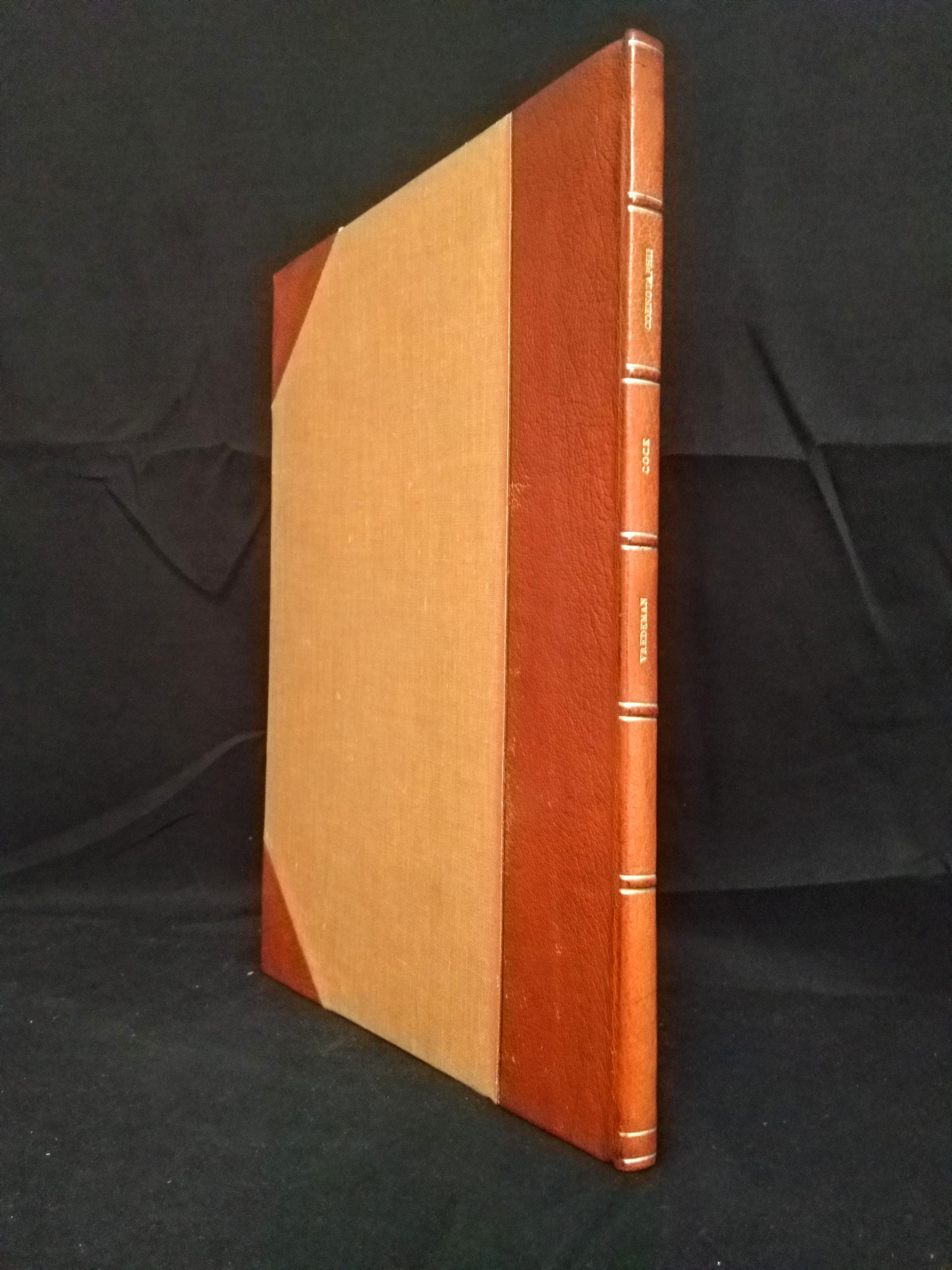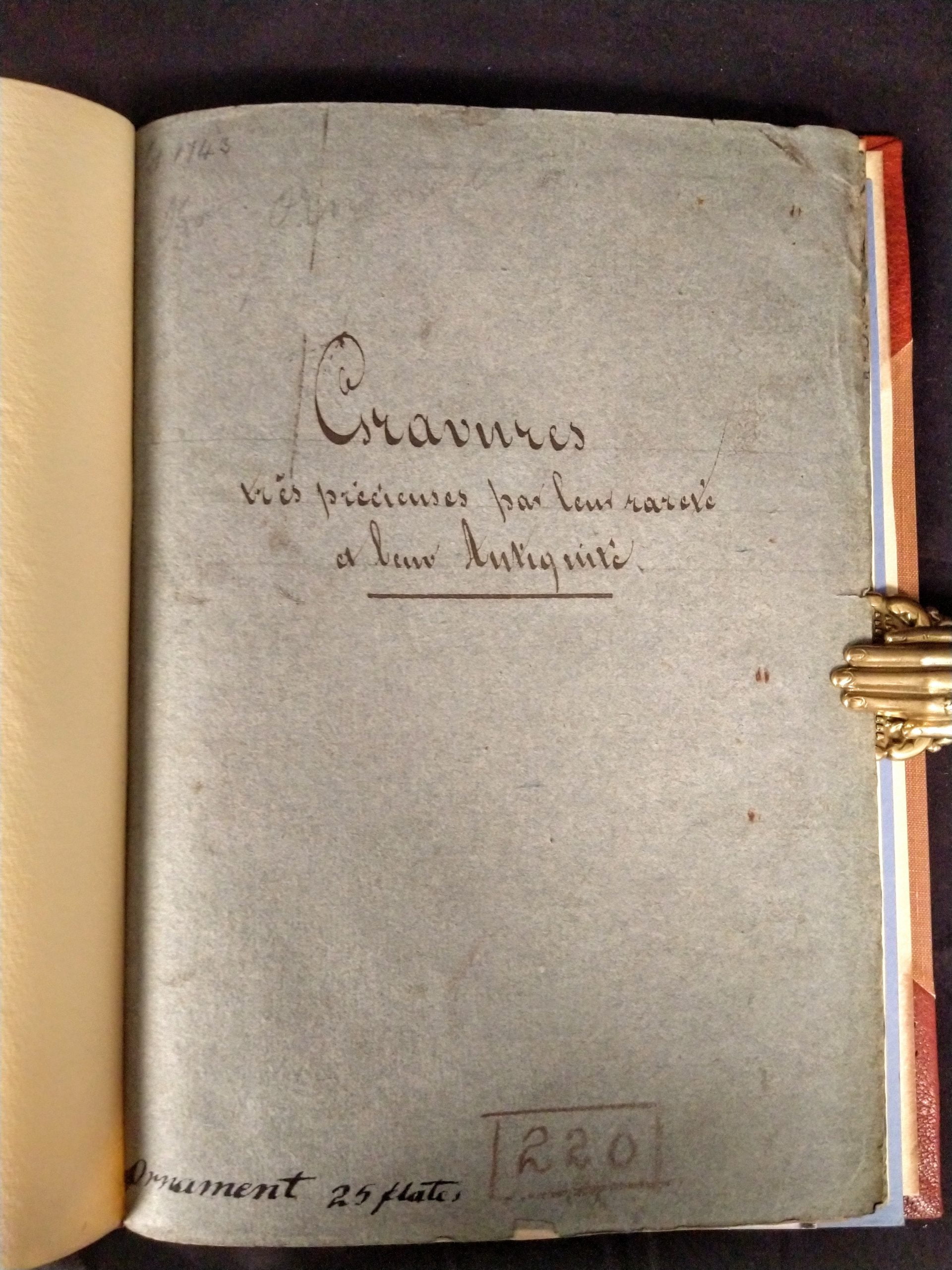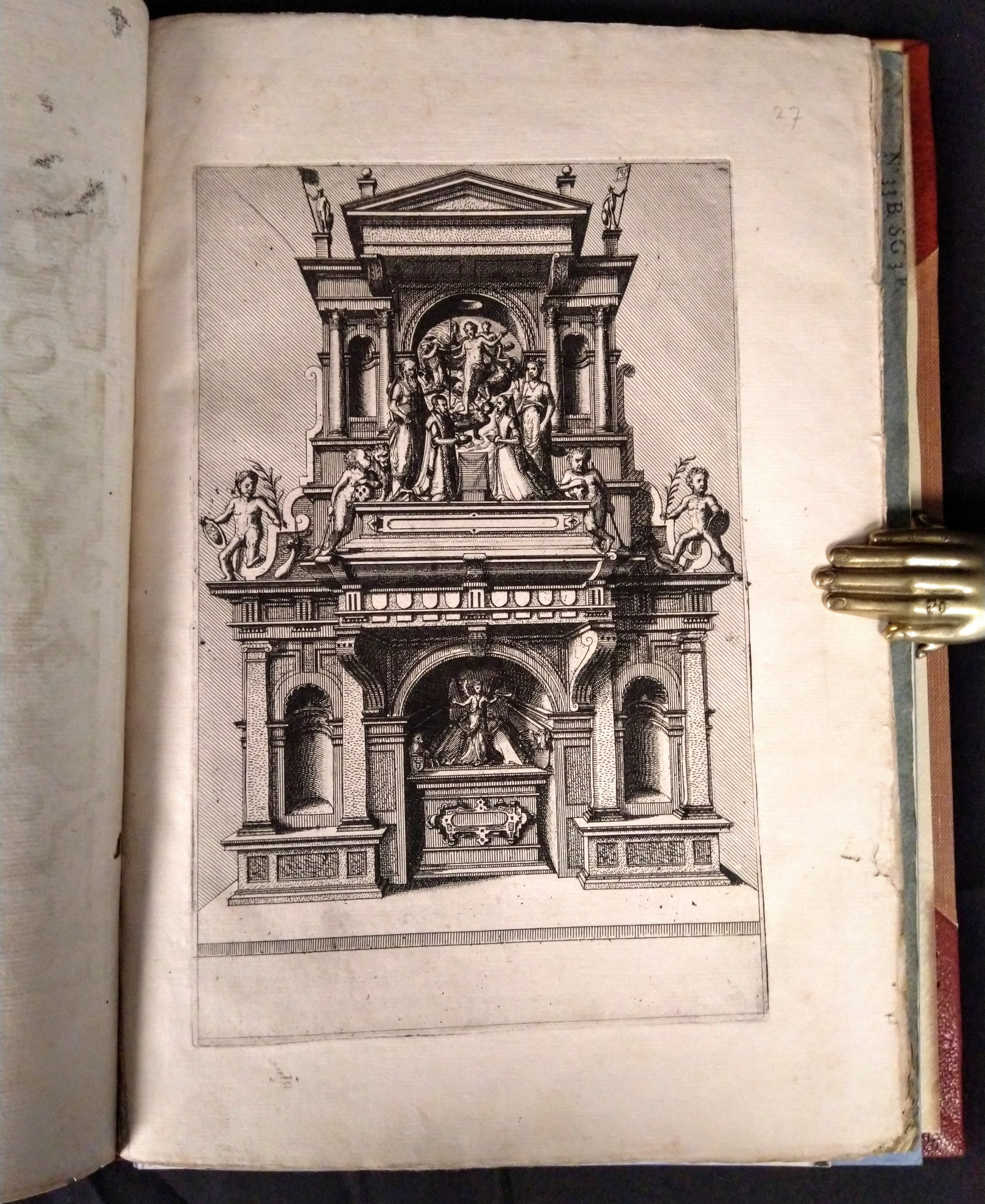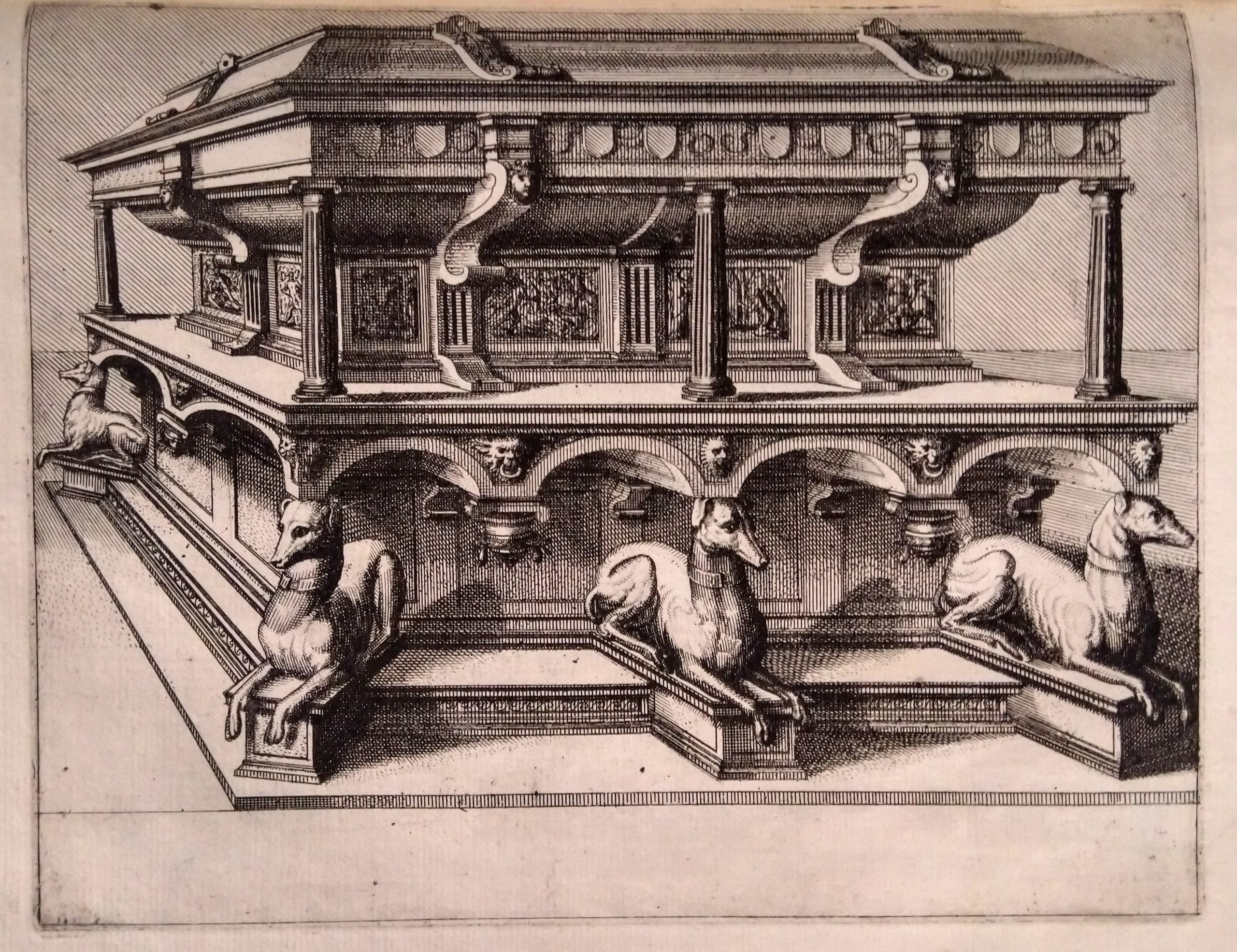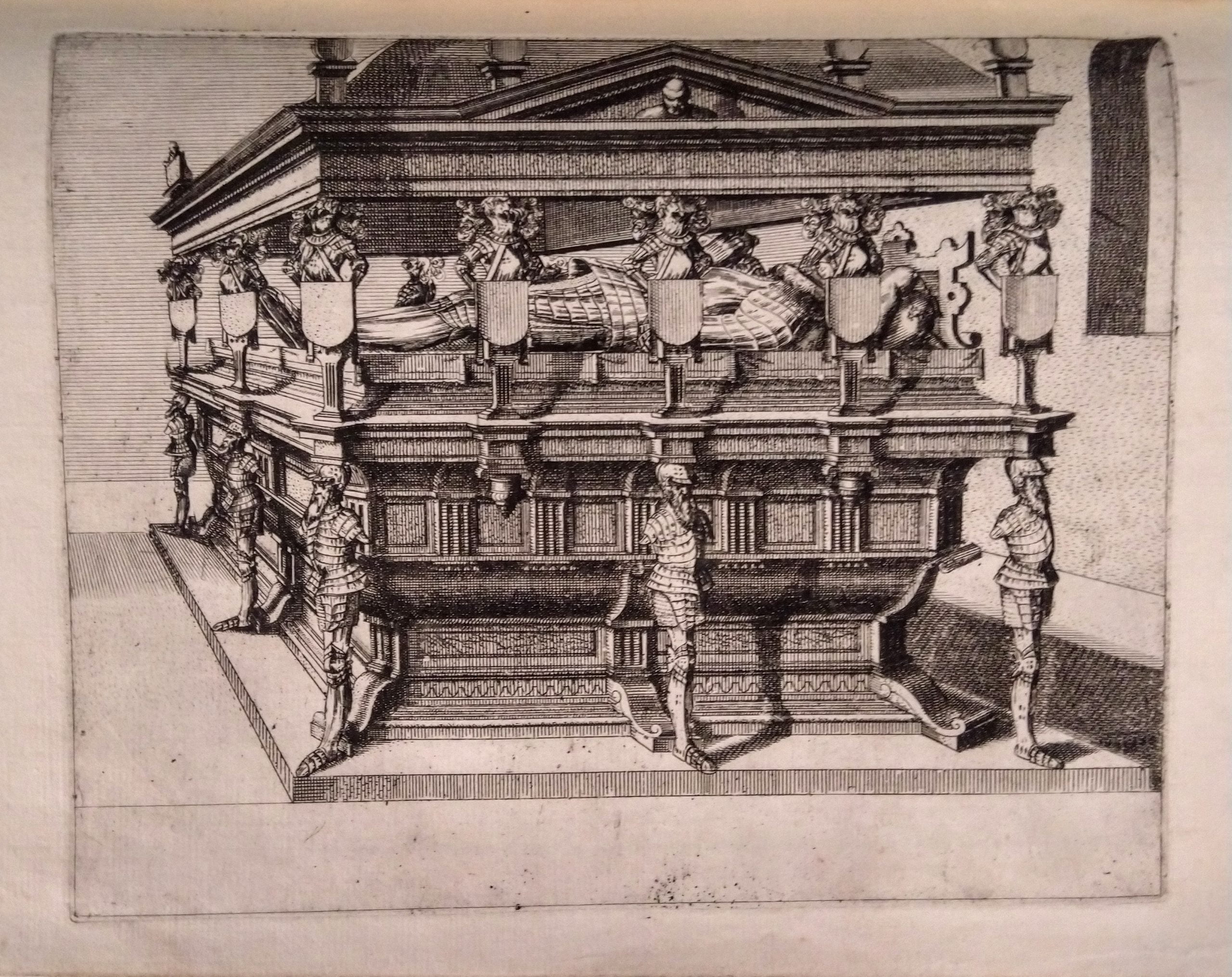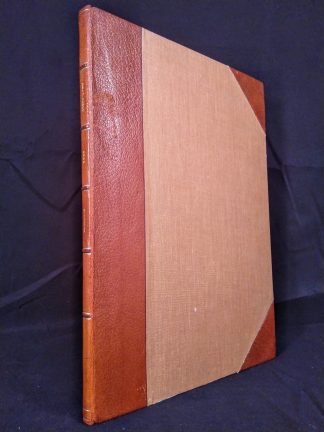VREDEMAN de VRIES, Hans
SUPERB FUNERAL MONUMENTS
Pictores, statuarii, architecti.
[Antwerp], [Philippe Galle], 1563£11,500.00
FIRST EDITION. Folio. Engraved t-p with interlacing ribbons, skulls, bones and shovels + 26 full-page engraved plates of tombs, sarcophagi and funerary monuments with pictorial and sculpted decoration. Edges a little dusty and slightly softened, largely uncut, couple of worm holes to blank margins, slight offsetting to blank verso of most plates, occasional thumb marks. A very good, wide margined copy, in fresh impression, in modern crushed half morocco over cloth boards, preserving c1800 blue wrapper, modern bookplates to front pastedown, autograph c1700 to fly.
A very good copy of the first edition of this important series of plates, here in fresh impression, produced by Hieronymus Cock, depicting major funerary monuments of royal, aristocratic and ecclesiastic personalities. Hans Vredeman de Vries (1527-1604) was a Dutch architect, painter and engineer, renowned for his skilled knowledge of perspective and architectural ornament, as well as his building of fortifications for major European capitals. His biography was among those included in Vasari’s ‘Lives of the Artists’, and probably written by Vredeman himself. First published in 1563, ‘Pictores’ was a ground-breaking architectural work anticipating the C17 Mannerist innovations of northern architects like Dietterlich. The 26 engravings of major funerary monuments abandon classical simplicity in favour of complex ornamentation and heavy stone drapery. Vredeman ‘gave western Europe the fantasy architecture of a haunted dream, delivered with a command of perspective that carried his plates through edition after edition from his “Pictores”…until well into the C17’ (‘Architecture Without Kings’, 75). Although some of the tombs portrayed are assigned to real people—Charles V, Queen Isabella and Andrea Doria—they do not represent the actual monuments, but fictional variations conceived by Vredeman. Influenced by Catholic ideals, the typology of his funerary monuments reflected the connection between ‘the rank of the deceased and the form of their tomb’ (statues, pictorial decoration, canopies, location, etc.), based on social factors and categories—the nobleman, the religious, the faithful wife, the emperor and the admiral, and unassigned sarcophagi (‘Sumptuous Memories’, 25, 22-23). A handsomely produced witness to the complex social iconography of funeralia, caught between the Reformation and the CounterReformation.
This copy (probably a very early issue?) was printed without the Latin verse captions praising the deceased or musing on death.
In stock



